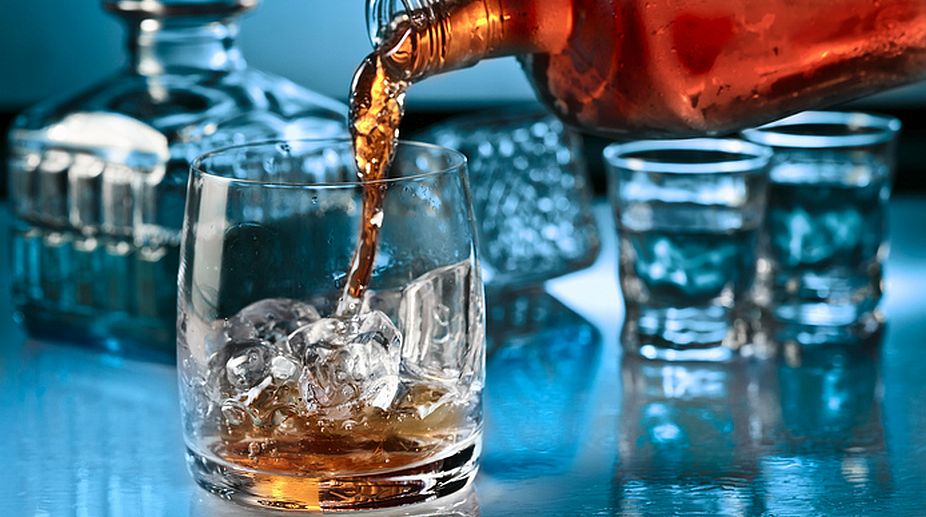Perils of addictions
A recent study by University College London has presented the results of its findings on the impact of smoking on life expectancy in rather dramatic terms.

Alcohol consumption Rep image (Getty Images)
Less than two years after these were issued by a determined woman medical official with the support of senior cancer experts, new British guidelines on liquor are being seen as a big boost against the many risks of alcoholic drinks not just in Britain but in other countries as well. Dame Sally Davies, Chief Medical Officer of Britain, overcame resistance from liquor industry lobbyists to radically change two-decade old guidelines which had understated health risks of liquor while also either implicitly conceding or at least not adequately refuting claims of some health benefits (for example in the context of red wine) spread by lobbyists and sellers of liquor.
The new guidelines came in the wake of growing concern over a reported 500 per cent increase in deaths from liver disease among working age people in Britain since the 1970s. Another serious concern came with growing evidence of higher risks of a range of cancers associated with liquor, including red wine. The evidence regarding the closer link between liquor and a range of cancers was supported by a new review from the Committee on Carcinogenicity in Britain. The development of the new guidelines was chaired by Prof. Mark Petticrew, Prof. of Public Health Evaluation at the London School of Hygiene and Tropical Medicine and by Prof. Sally Macintyre, Prof. Emeritus at the University of Glasgow.
Advertisement
The new guidelines on liquor consumption released on 8 January 2016 by the Chief Medical Officer to replace nearly two-decade old guidelines warn that drinking any level of alcohol increases the risk of a range of cancers. The guidelines also make it clear that no level of alcohol is safe to drink in pregnancy. These guidelines inform that drinking regularly over time can lead to a wide range of illnesses including cancer, strokes, heart diseases, liver diseases and damage to the brain and nervous system. On the other hand, these guidelines also make it clear that there is no justification for drinking for health reasons.
Advertisement
In fact the highly exaggerated and mostly imaginary health benefits cited to justify increased consumption of red wine had led to increased chances of addiction among a different category of drinkers who had been careful about hard liquors like whisky, vodka and rum but had become careless regarding consumption of red wine and fortified wines due to the myths spread regarding their lower risks and higher benefits. The alcohol content of red wines and fortified wines is between 10 to 22 per cent.
This is three or more times higher than the alcohol content of beer which ranges between 2 to 10 per cent. Despite this red wine was promoted as low risk liquor and at times this was promoted as a health drink which benefits the heart. Later even some of those who claimed such benefits had to admit that these could be more easily obtained from raw grapes and berries and from some types of exercise, and there was no need to accept the various risks of alcohol consumption to get these benefits.
However as the myth about benefits and low risk had been spread widely, a significantly large number of people started drinking red wine as a matter of almost daily habit. It was against this background that a huge increase in liver disease deaths among working age people caused a lot of concern. At this stage health professionals and activists started warning about this.
Duncan Selbie, head of Public Health, England presented in his calculation of health impacts that one glass of red wine is the equivalent of three shots of vodka. This was widely reported. Around the same time some objections were also voiced by environmentalists regarding excessive use of agri-chemicals and water by the wine industry and also regarding its high GHG emissions.
The Economist reported that 960 litres of water is required to make one litre of wine. To produce 274 million hectoliters of wine in a year the amount of water needed can be well imagined. About 19 million acres have to be devoted to grow the essential raw material for the wine industry. Hence a lot of precious land and water are taken away from producing staple food at a time when food security is increasingly threatened. All these factors taken together can lead to a better comprehension of the real costs of the liquor industry.
As we in India are painfully aware, the costs of high liquor consumption in terms of road accidents and other accidents, ruination of health, economic loss, domestic violence, sexual violence and other violent crimes are very high. Despite the availability of shocking facts and figures on all these aspects, this issue does not get the attention it deserves among the elite. People particularly women at many places are fighting to reduce the consumption and sale of liquor in various ways. Efforts such as the issue of new guidelines in Britain are a big help for creating conditions in which the voices of these struggles can be heard.
(The writer is a freelance journalist who has been involved with several social movements and initiatives.)
Advertisement